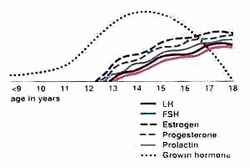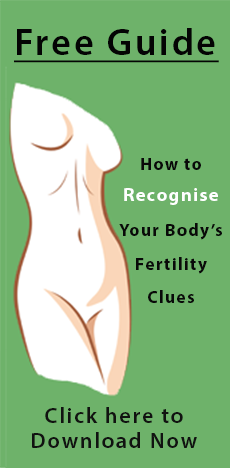Understanding the way your menstrual cycle works each month is an important step in improving your reproductive health.
Menstruation is the term given to the periodic discharge of blood, tissue, fluid and mucus from the reproductive organs of sexually mature females. The flow usually lasts from 3 – 6 days each month and is caused by a sudden reduction in the hormones oestrogen and progesterone.
It is hormones that govern this process. Hormones are a chemical substance, produced by an organ, gland or special cells, that is carried through the bloodstream to regulate the activity of certain organs.
It is the balance and interplay between these hormones which regulate the specific events that make up the menstrual cycle.
Factors like nutrition, stress, exercise, and belief systems can all influence how the hormones work and what we experience during our cycles.
Puberty
 Hormones start to do their thing at the onset of puberty, and various types of hormones are involved.
Hormones start to do their thing at the onset of puberty, and various types of hormones are involved.
These hormones are:
Oestrogen
1) Promotes the development and maintenance of female reproductive structures (especially the endometrial lining of the uterus),
2) Assists in the control of fluid and electrolyte balance within the body.
3) Prepares the follicle for the release of an egg.
Oestrogen also has many other functions.
Progesterone:
Secreted at ovulation, helps to prepare the endometrium (womb lining) for the implantation of an egg, prepares mammary glands for milk production. Primarily concerned with the procreation and survival of the foetus.
FSH Follicle Stimulating Hormone: Stimulates the follicles (a follicle is a balloon shaped structure which is filled with fluid and contains an egg, follicles are found in the ovaries) to ripen several eggs. At the same time the ovaries release oestrogen.
 LH Lutenising hormone:
LH Lutenising hormone:
Further develops the follicles, triggers ovulation and stimulates production of other hormones necessary for the post ovulatory stage of the menstrual cycle.
The secretion of hormones is a complex affair. Various parts of the body become involved in a myriad of chemical transactions.
Diagram at left is taken from “Women’s Bodies, Women’s Wisdom” by Dr Christiane Northrup, Figure 5 page 103. The Female Mind/Body Continuum: Interactions between the Brain and the Pelvis
Often the hormones within the menstrual cycle have other functions to play in a woman’s body as well, for example progesterone increases libido, is a natural diuretic and aids in the process of building new bone to name just a few, therefore maintaining hormonal health is essential to all levels of a woman’s well being.
We need to remember that these hormones are usually only present in small amounts and that it is the relationship between the levels of the hormones that is critical. When the balance is upset, any number of menstrual irregularities can occur.
For example the triphasic or combination contraceptive pill contains the hormones oestrogen and progesterone. It works by altering the bodies natural hormonal balance, thus inhibiting ovulation, preventing implantation of the egg and making the cervical mucus hostile to sperm. Because this contraceptive works by altering the relationship between the hormones it is easy to see why it can precipitate so many side effects on a physical, mental and emotional level. Leslie Kenton’s book Passage to Power goes in depth into hormones, their effects and nutrition etc.

 Hormones start to do their thing at the onset of puberty, and various types of hormones are involved.
Hormones start to do their thing at the onset of puberty, and various types of hormones are involved. LH Lutenising hormone:
LH Lutenising hormone: